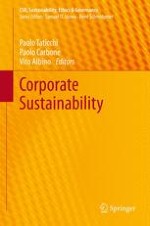2013 | OriginalPaper | Chapter
Existing Buildings’ Energy Upgrade: An Economical and Environmentally Sustainable Opportunity
Authors : Anna Laura Pisello, Franco Cotana
Published in: Corporate Sustainability
Publisher: Springer Berlin Heidelberg
Activate our intelligent search to find suitable subject content or patents.
Select sections of text to find matching patents with Artificial Intelligence. powered by
Select sections of text to find additional relevant content using AI-assisted search. powered by
